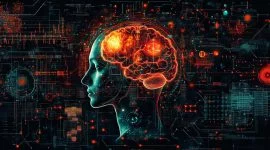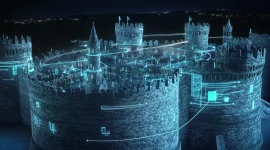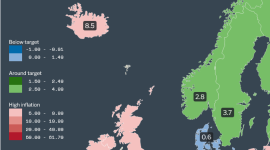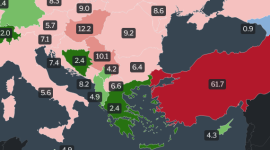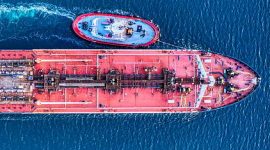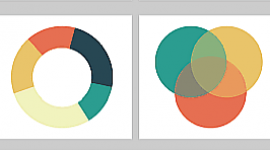Most of us probably think about economics in terms of money, finances, and businesses. After all, that is how it is most commonly interpreted in presented in mass media.
However, economics is not primarily about those things. It is not primarily about businesses, statistics, or even mathematics.
In this post, we will learn what economics is and how it is related to decision-making. We will also learn about Adam Smith and concepts like division and specialization of labor, touch the topic of trade and markets, and finish this introductory post with an understanding of microeconomics and macroeconomics.
Economics is the study of decision-making and scarcity
Economics is the study of decision-making in the face of scarcity. And those decisions can be very different: from individual decisions to national or societal decisions, for example, from deciding if you will buy that BigMac to broader decisions like whether your country will issue bonds to (re)finance its debt or fund infrastructure projects.
The concept of scarcity
To properly study economics, we need to understand the concept of scarcity. The nature of goods, services, and resources are limited and finite in most cases. Most, if not all, resources exist in limited supply. This is not to say that economics is a zero-sum game. That is but one of the fallacies connected with this study and the topic we will discuss in the future.
Even if we leave aside the discussion of whether economics is a zero-sum game, human wishes and desires are anything but finite. On the contrary, our human need for more is virtually infinite and unbounded. As such, the study of scarcity and decision-making in that context is critical. That’s what economics is, in a nutshell.
Another similar approach to defining economics is studying how and why people, businesses, nations, and societies distribute resources and all associated implications for human well-being.
Finding answers to the question of scarcity and making decisions in that context defines economics’ main goal. To obtain the most value given the resources at our disposal is a critical decision all of us make – from a personal, family, national, and even supranational level.
So, how do we obtain the most?
We have several options at our disposal. One of them is that each one of us produces most or everything we need. In a not-so-distant past, that was (almost) the case. But, then, one person knew how to build a house, grow crops, hunt, and fish for food, prepare medicinal remedies…
Could you do all of those or any of those things today? Of course, you could, they are not impossible to learn, but the thing is – you don’t have to do that. And this sets the stage for another important concept of economics – the division and specialization of labor.
The divisions and specialization of labor
Enter Adam Smith. He lived in the 18th century (1723-1790) and is famous for his book The Wealth of Nations, first published in 1776. The same year America’s Declaration of independence was, well, declared.
Now, Smith was not the first person ever to write about economics, but he was the first to do so in a structured, modern and comprehensive way. And right off the bat, in the very first chapter, he drops the D-bomb: Division of labor concept.
In essence, the concept of division of labor states that the way for producing goods or services is to divide the effort required into many tasks that different people could do. That’s a stark difference from the first approach mentioned earlier, where a single person would be tasked with doing everything and anything.
Today, you can witness the division of labor literally everywhere. For example, if you go to a restaurant – there is a different person who will greet you, there is a chef and cooks, servers, suppliers… Similar examples can be seen all over the place.
The division and specialization of labor are some of the key drivers behind productivity increase. Smith used the production of a single pin as an example in his book. He dissected the process and found that there are 18 tasks related to creating a single pin. He further noticed that a single person could create around 20 pins in a single day. But, on the other hand, if we introduce the division of labor and task 10 people with two to three tasks related to pin production, they could make around 48.000 pins in a single day.
Why is that possible?
Why does division of labor increase productivity?
Well, now it’s the right time to introduce three reasons and concepts behind this situation.
The first one – specialization. People naturally (and later on through education) gain skills and have more talents for different things. By matching the right people with the right parts of the work, they will be more efficient.
Let’s get back to the restaurant from the previous example. Imagine a server having to run a large kitchen and the chef who runs all over the place and serves customers with food and drinks. Will they be as efficient in their efforts? Not really.
The second important reason is that workers specializing in certain tasks gain more experience, speed, and effectiveness in doing them. They learn tips and tricks, increase their speed and quality outputs. The practice also showed that specialized workers with a lot of experience would propose new and innovative ways to do their work better, faster, and with higher quality. This is because they know their way around it as they have spent a lot of time learning and performing those tasks.
And, lastly, the third reason is the ability to utilize economies of scale. The general idea is that as the level of production increases, the average cost of production of an individual item decreases.
So, effectively, division of labor and its specialization are effective antidotes to the scarcity problem. But, they are not enough.
In the next section, trade and markets are explained as another key enabler in our quest and dealings with the problem of scarcity.
Markets and trade
Specialization and division of labor are great as long as it benefits the society at large. But to achieve that, more is required. An efficient system that enables workers to earn their salaries, which they can use to buy goods and services they need. In turn, businesses providing those goods and services earn their revenue, hire and pay their employees, and continue the circle.
While extremely simplified, what we just described is a trade. Thus, more actors offering their services and goods and more people buying them represent a market.
What is Microeconomics? What is Macroeconomics?
Previous sections introduced us to the general ideas of economics, decision-making, scarcity, specialization, and the division of labor and trade and markets.
In this section, we will explore what microeconomics and macroeconomics are.
Economics is a vast study and covers a lot of ground. It touches and affects almost every single aspect of human civilization. Tackling challenges related to climate change? Economic is relevant. Finding a balance between free trade and prevention of monopolies? Economics. Ensuring well-being for all people on the planet within the context of resource availability? You guessed it – it’s about economics.
Being so vast and spanning such wide areas, it makes sense to divide economics into two parts: microeconomics and macroeconomics.
Microeconomics
Microeconomics studies elements of economics related to individuals and households as well as companies (individual agents). Microeconomics will study how people manage their income, spend their money, and what kinds of goods and services they are buying (or saving their money). It will also study how businesses create products, set product and sales strategies (including quantities, pricing, availability), and more. It will also try to answer questions related to the financing of those companies, general business management considerations, and more.
Essentially, microeconomics studies how individuals and businesses benefit and manage trades, markets, and resources and tries to understand their decisions and their impacts on a broader economic system.
Macroeconomics
Macroeconomics is about the big picture. It looks at economics as a whole and deals with issues like inflation, government deficits, unemployment rate, credit ratings, GDP changes, levels of imports, and exports… It asks questions about the causes of unemployment, inflation, price levels, GDP growth or decline, and more. In future posts, we will discuss different macroeconomics elements, including the introduction to John Maynard Keynes and his seminal theories that gave birth or set the stage for modern macroeconomics and its schools of thought.
While microeconomics is more concerned with the actions of individual agents (individuals, households, businesses), macroeconomics deals with broader issues such as general economic performance, structure and mechanisms, and decision-making processes affecting those elements.
Although they cover different economics aspects, macroeconomics and microeconomics are tightly connected and mutually affected. So, in essence, don’t think of them as two separate subjects – consider their relation as complementary and comprehensive (as they cover the entirety of economics as a field of study in general).
ABOUT THE AUTHOR

